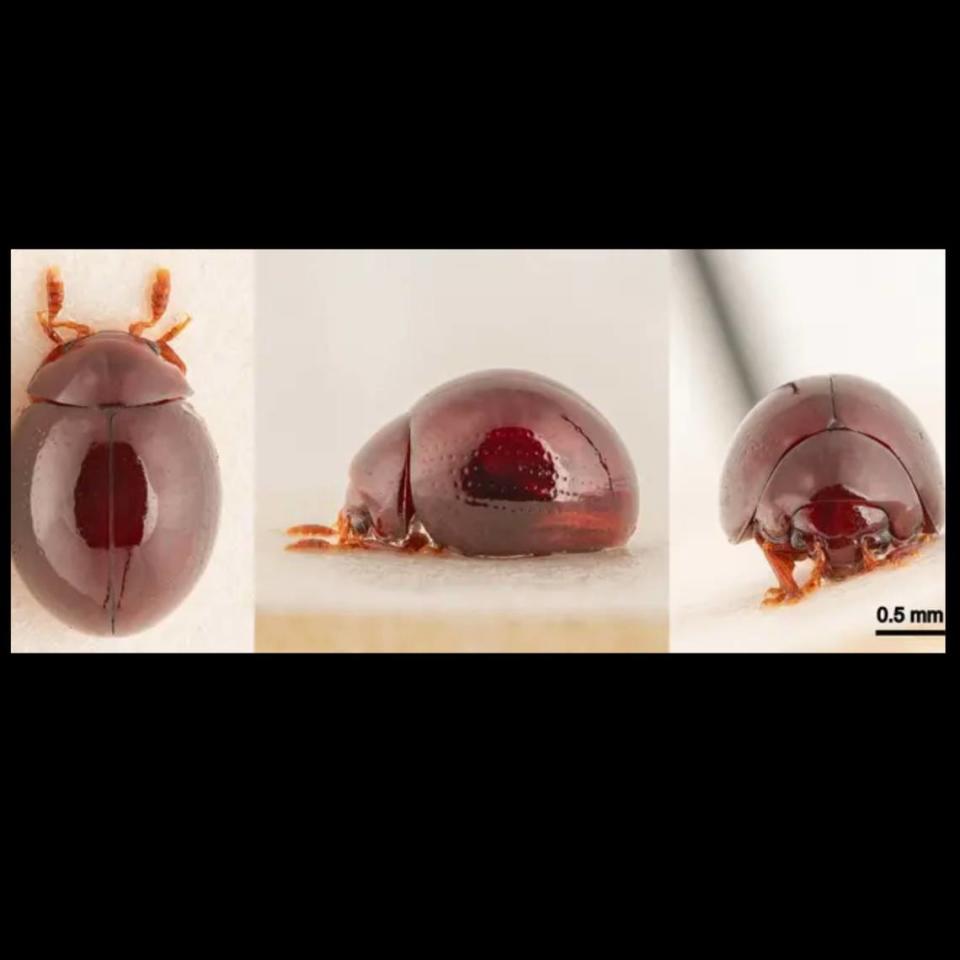‘Unusually large,’ beautiful creature discovered on a field trip in Brunei. See it
Armed with hiking gear, long pants and a lot of enthusiasm, a group of scientists, citizens and students trekked into the rainforests of Brunei on the hunt for discovery.
They were led by a guide from Taxon Expeditions, a company that organizes field trips for scientists and lay people alike, focusing on “little things that run the world,” according to a March 20 news release.
Called “taxonomy tourism,” the group was searching for undiscovered species in Ulu Temburong National Park, a rainforest on the eastern edge of Brunei, a country on the island of Borneo, according to a study published March 15 in Biodiversity Data Journal.
The group was led to a mountain stream, called Mata Ikan meaning “fish eye,” where they placed leaf litter in a sieve and started to dig through the brush, according to the study.

As the stones and sticks were sorted from the leaves, a tiny red beetle appeared among the brown and green material.
Just 2 millimeters long, its body was a brilliant red and caught the light of the day on its shiny carapace, the study said.
It was a leaf beetle, but it didn’t look like any found before — it was a new species.

Three of the insects were collected over two days of sampling by the field trip attendees, and all were females, the group said.
The bodies of the insects were compared to other leaf beetles, but there were some key differences, according to the study.
First, despite its objectively tiny size, the beetle is considered “unusually large” for leaf beetles, and boasts nearly the longest length ever discovered for the genus.
The female genitalia of the new beetle is “pear-shaped” and “shorter” than previous examples, according to the study. Other leaf beetles are also much darker in color, nearing black in some cases, the group said.

“As is customary on our Taxon Expeditions, the name for the new species was decided during a voting session on the last night of the expedition,” which took place in September, the group said in the study. “The proposal which won the most votes was to name it after the stream that runs through the small ravine where the specimens were found, namely Sungai (stream) Mata Ikan.”
The new beetle was named Clavicornaltica mataikanensis, a leaf beetle from Mata Ikan.
Lehman Ellis, a field trip participant from the U.S., said being part of the discovery was “exciting and beautiful.”
“We introduce the general public to all these tiny, beautiful and completely unknown animals, and show them that there is a whole world still to be discovered,” Taxon Expeditions founder and entomologist Iva Njunjić said in the release.
Tourist sees something crawling on leaf during night hike — and discovers new species
‘Unique songs’ in the night lead to discovery of new species with sword-like tail
Sky islands — teeming with new species — found in Southeast Africa. See the creatures
Mysterious ‘eyeball from the sea’ washes up on Texas beach. See its ‘creepy beauty’

